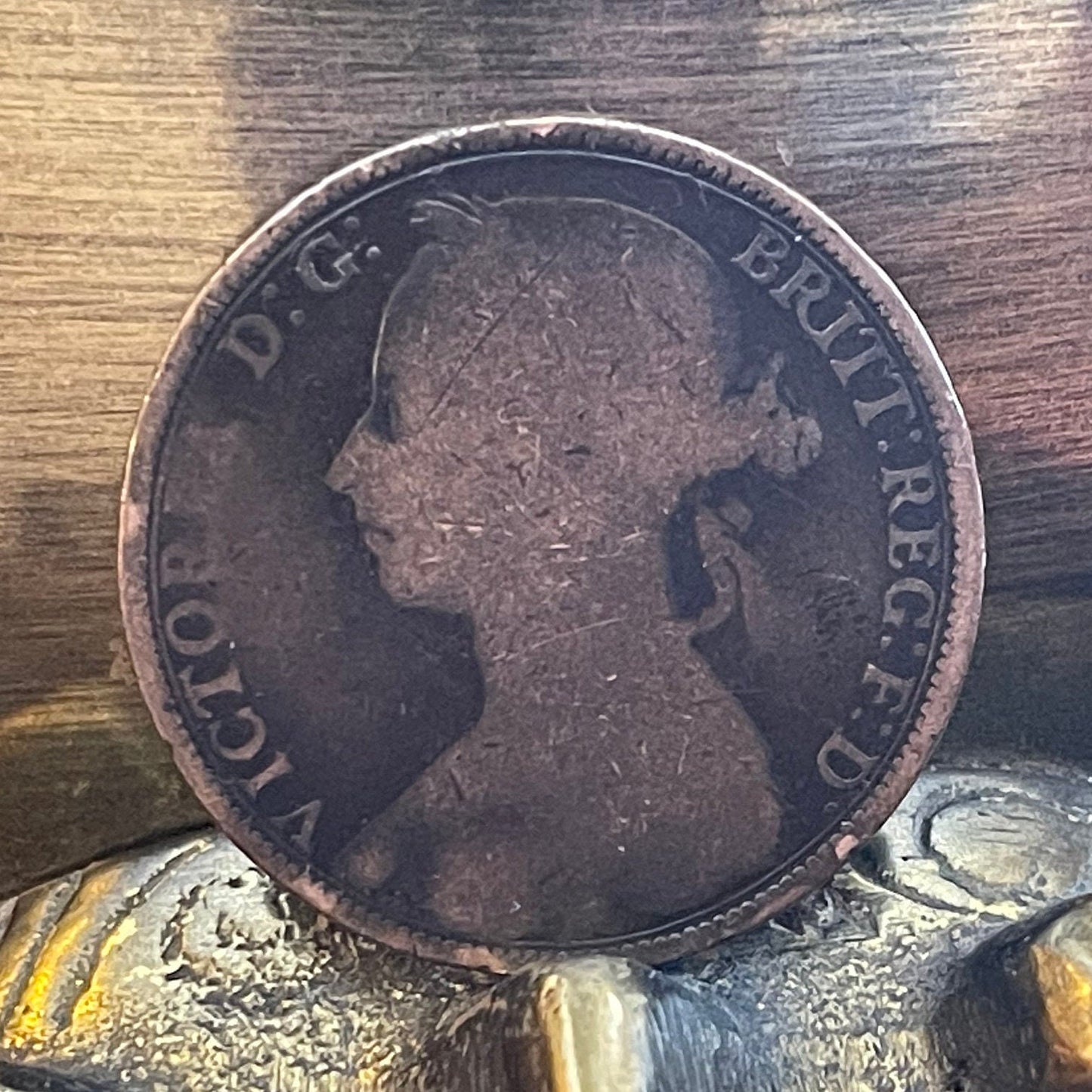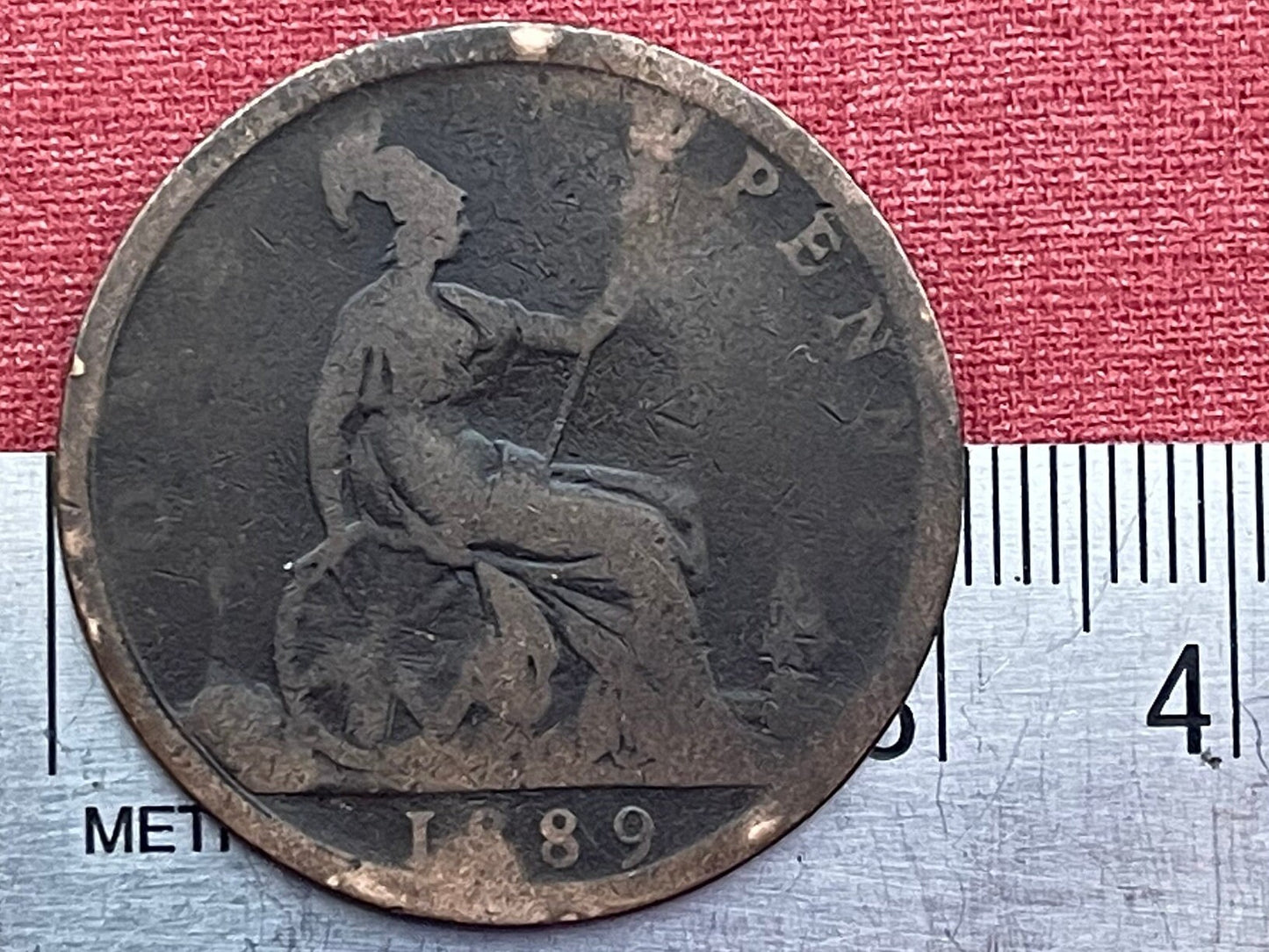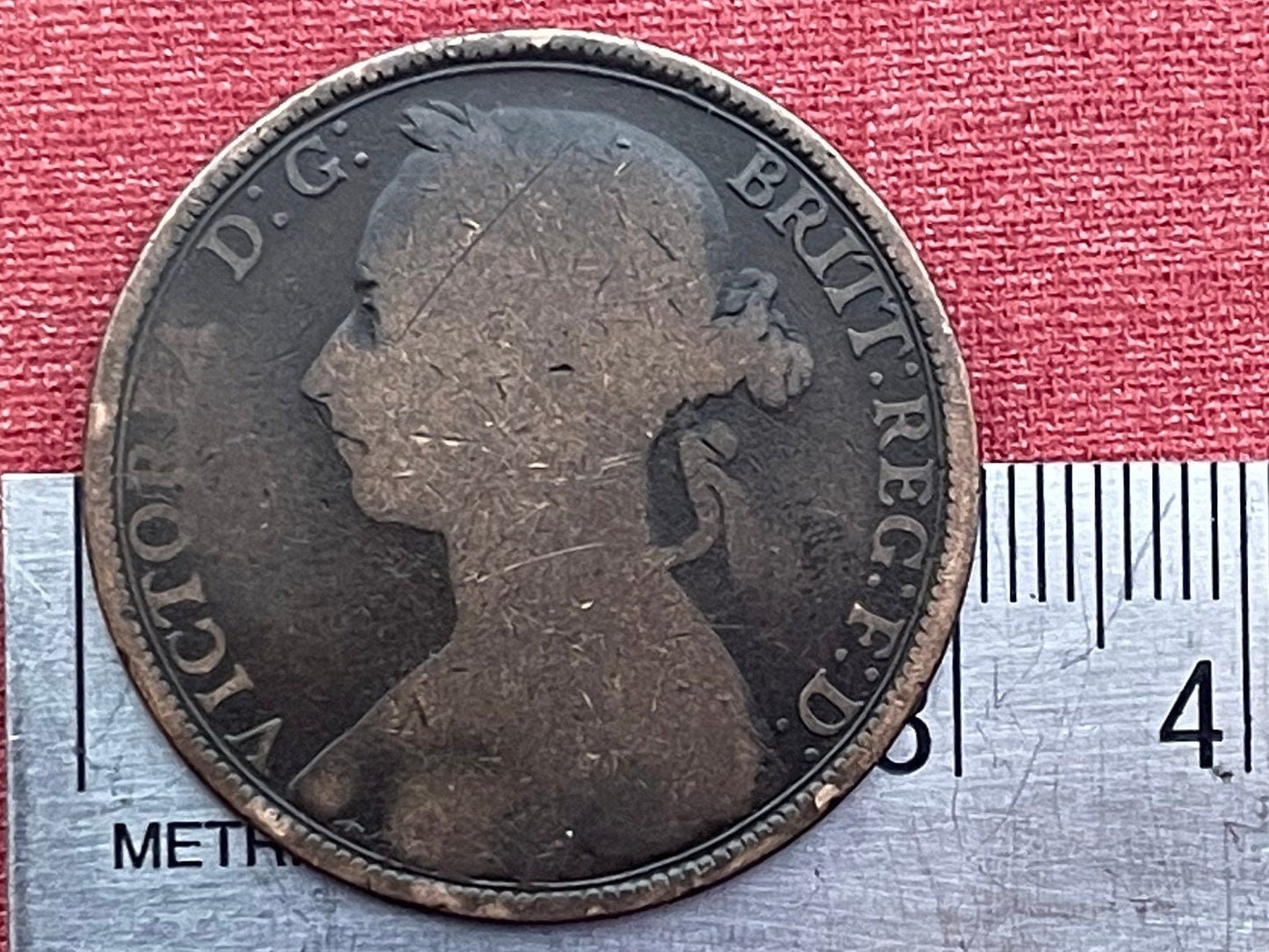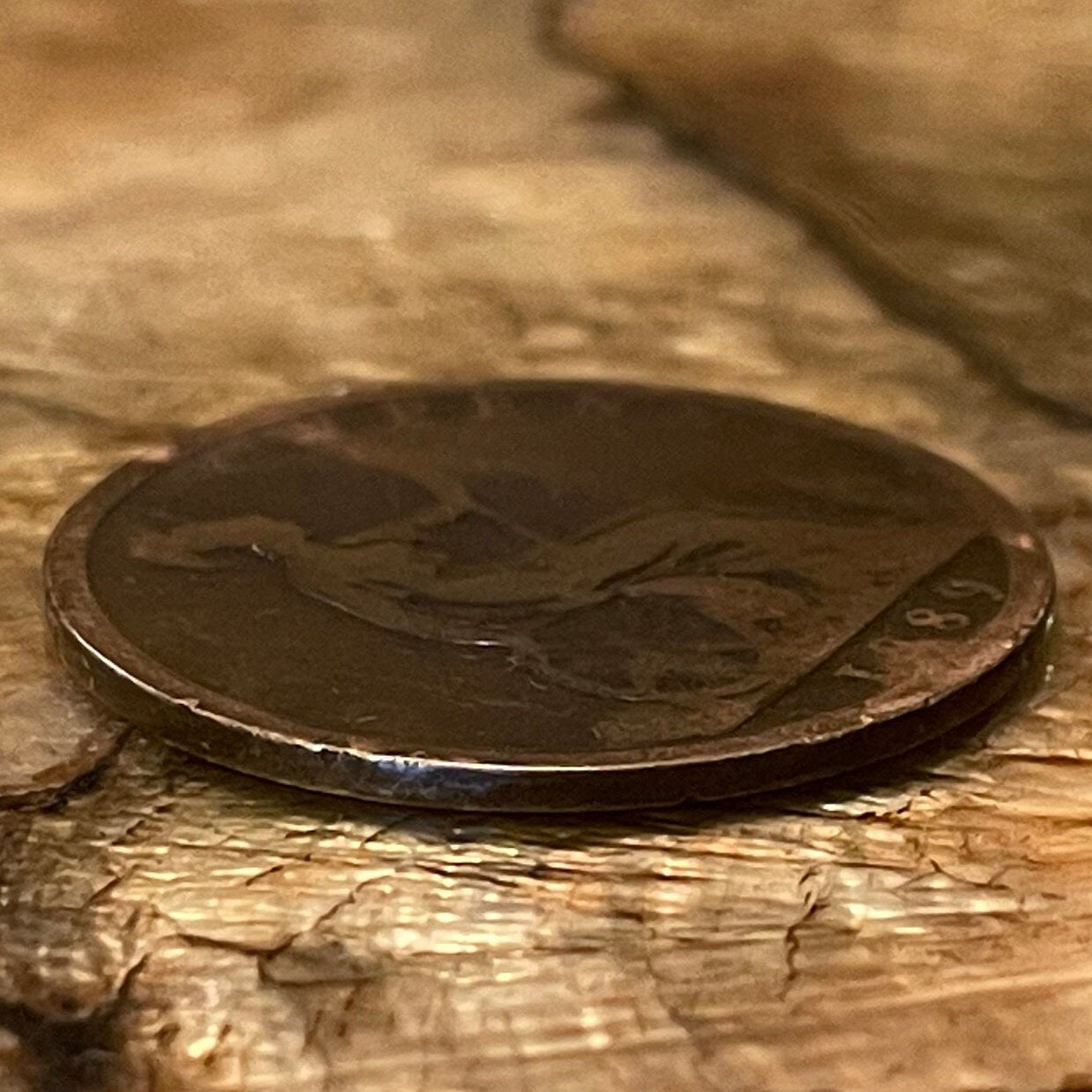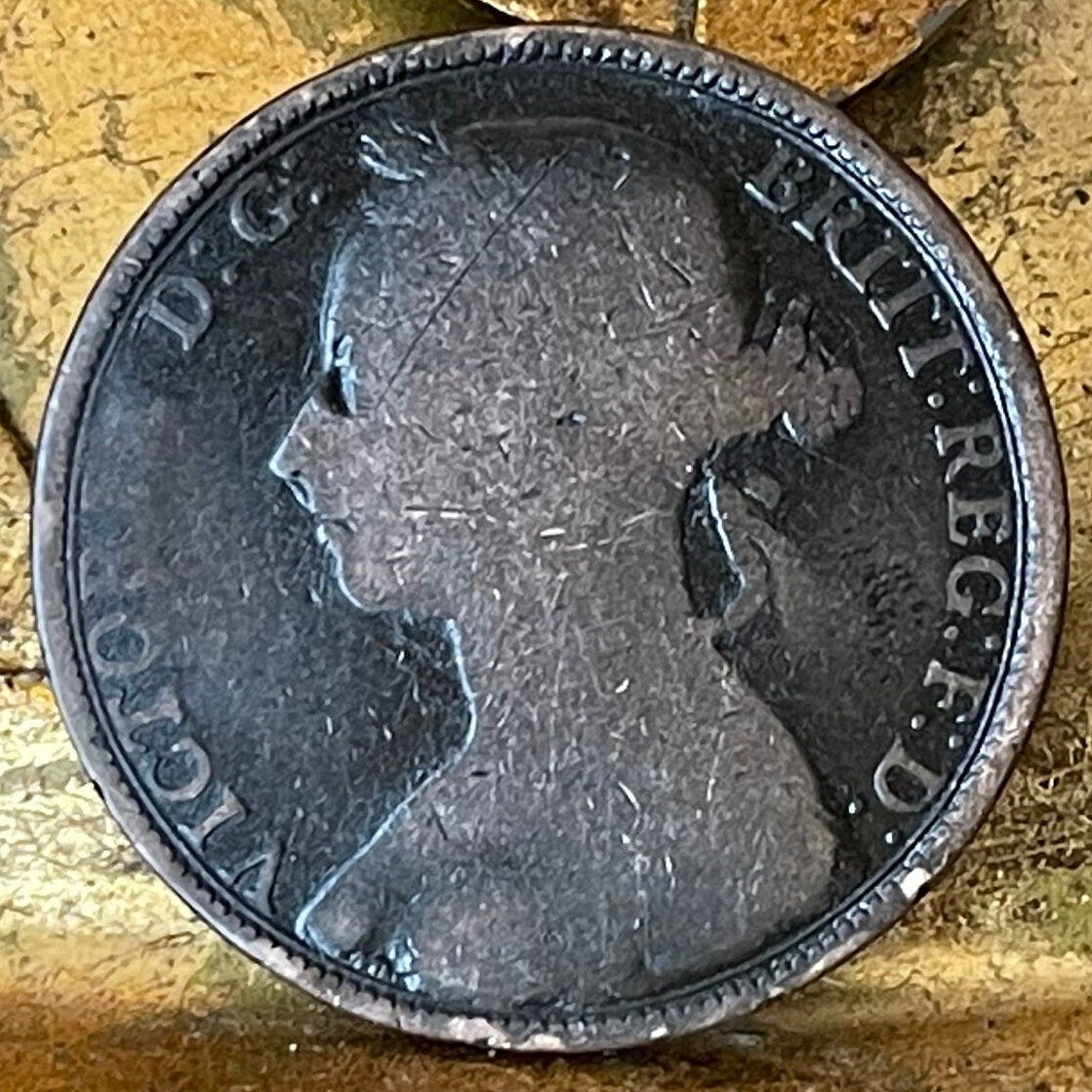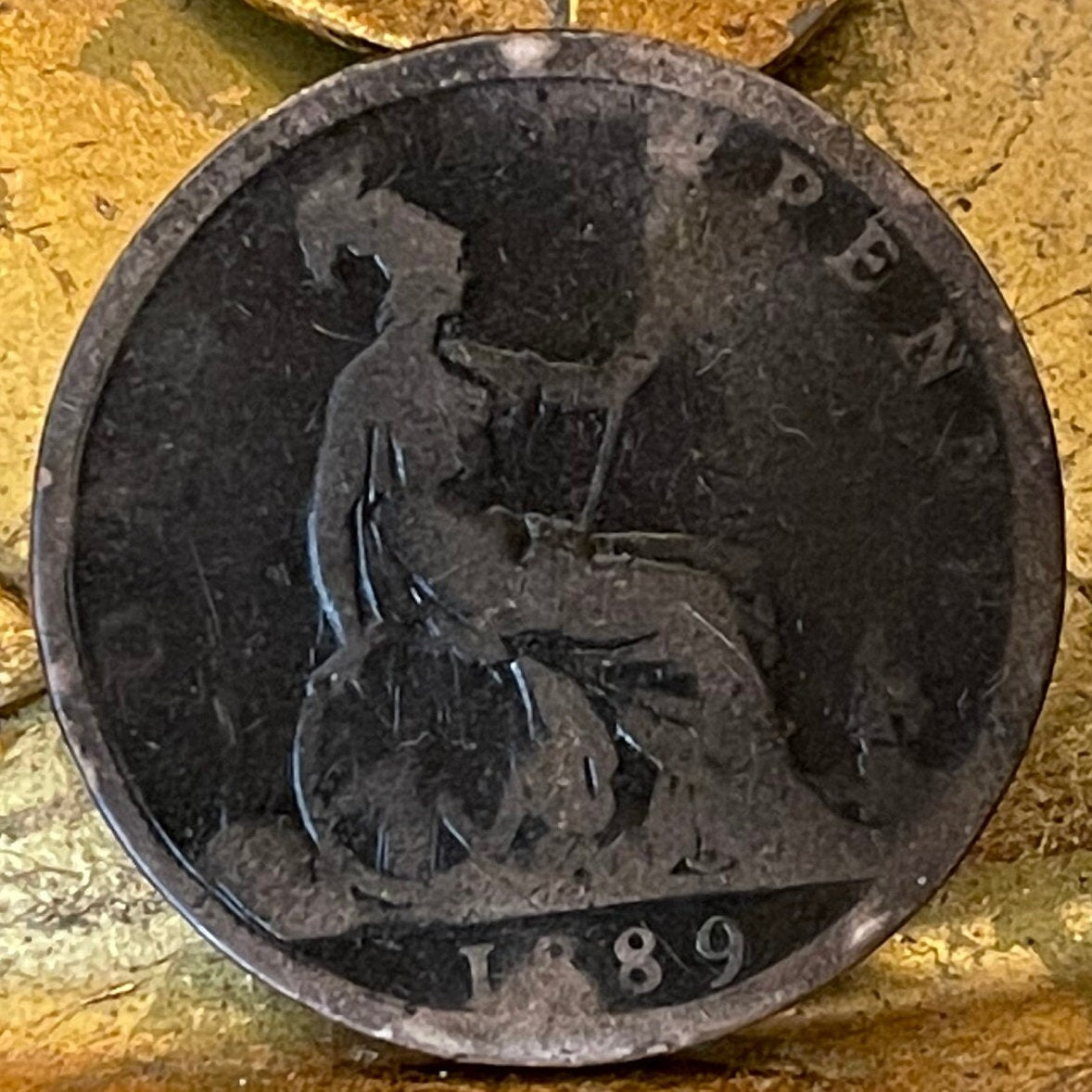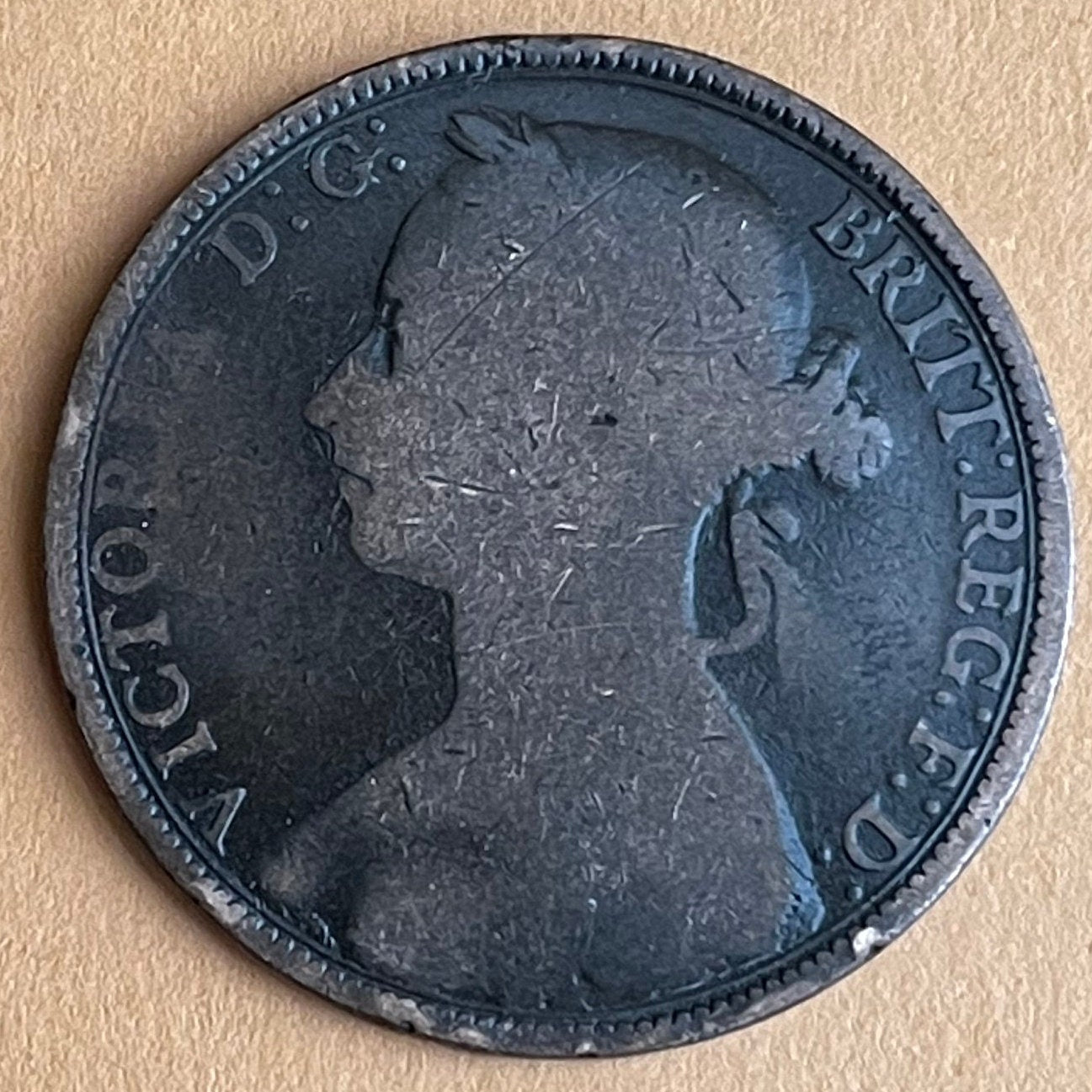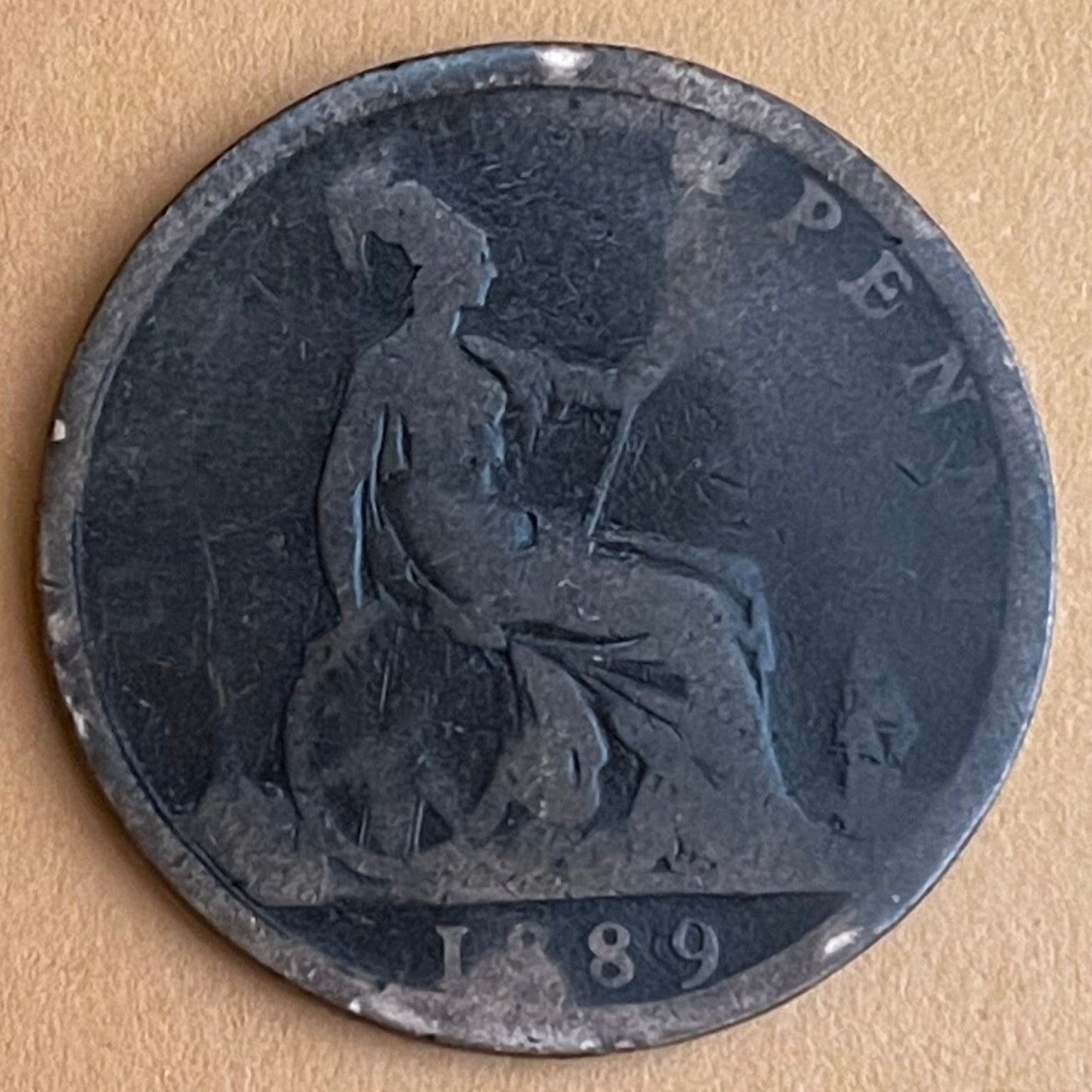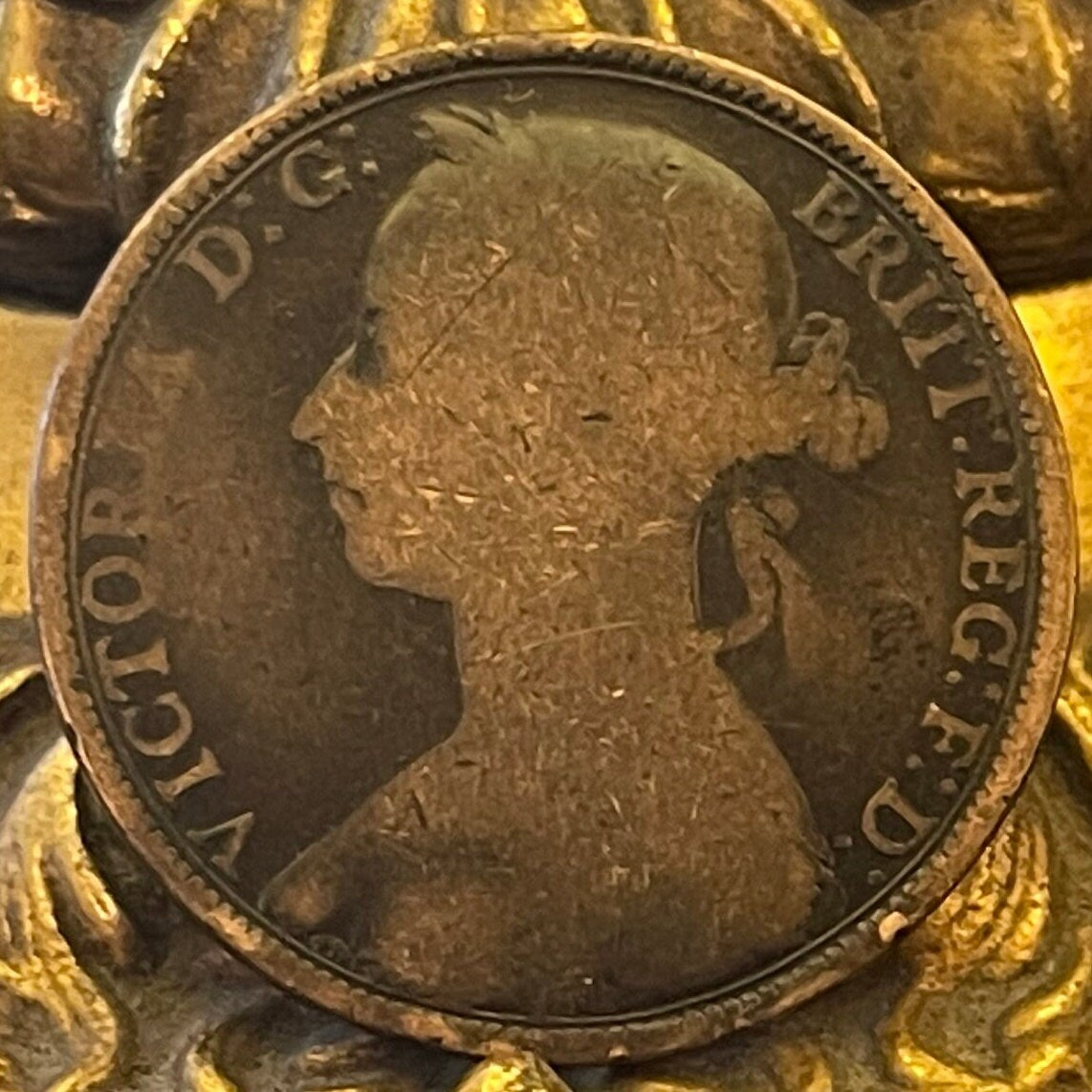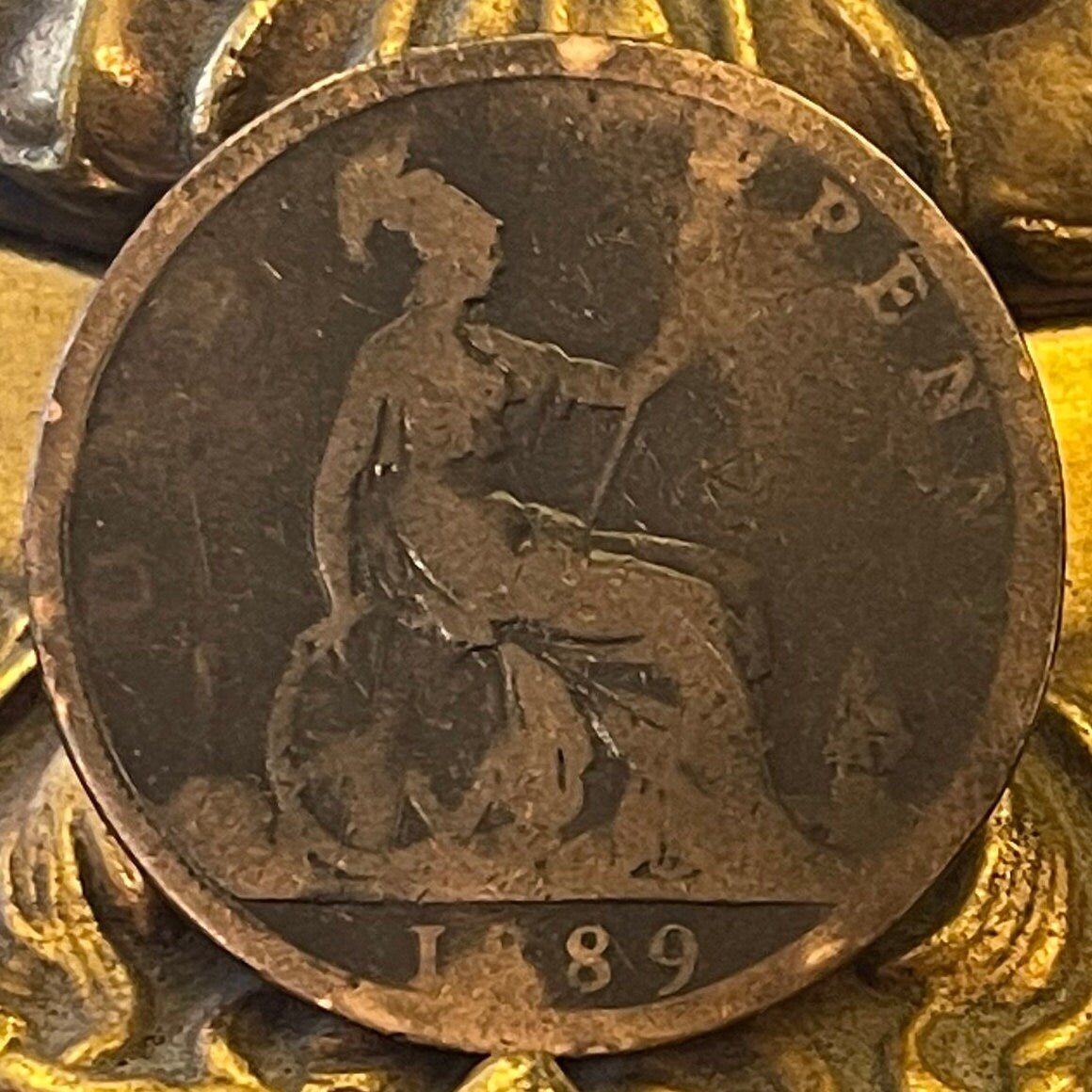elemintalshop
Queen Victoria (2nd Portrait) & Britannia with Trident 1 Penny Great Britain Authentic Coin Money for Jewelry (Bun Head) CONDITION: FAIR
Queen Victoria (2nd Portrait) & Britannia with Trident 1 Penny Great Britain Authentic Coin Money for Jewelry (Bun Head) CONDITION: FAIR
Couldn't load pickup availability
Queen Victoria & Britannia with Trident 1 Penny Great Britain Authentic Coin Money for Jewelry and Craft Making (Second Laureate Portrait) (Bun Head) CONDITION: FAIR
CONDITION: FAIR
Obverse: Second laureate portrait ('Bun Head') of Queen Victoria facing left, legend around.
Lettering: VICTORIA D:G: BRITT:REG:F:D:
Translation: Victoria, by the Grace of God Queen of the Britains Defender of the Faith
Engraver: Leonard Charles Wyon
Reverse: Seated figure of Britannia right, with trident in left hand and shield bearing the Union flag in right, sea behind with lighthouse on left and ship on right, denomination above and date in exergue.
NOTE: many varieties. With or without "H" mintmark.
Lettering: ONE PENNY
Features
Issuer United Kingdom
Queen Victoria (1837-1901)
Type Standard circulation coin
Years 1874-1894
Value 1 Penny = 1/12 Shilling (1/240)
Currency Pound sterling (1158-1970)
Composition Bronze
Weight 9.45 g
Diameter 30.8 mm
Thickness 1.6 mm
Shape Round
Orientation Medal alignment ↑↑
Demonetized 31 August 1971
Number N# 855
References KM# 755, Sp# 3954/5
Wikipedia:
Victoria (Alexandrina Victoria; 24 May 1819 – 22 January 1901) was Queen of the United Kingdom of Great Britain and Ireland from 20 June 1837 until her death in 1901. Known as the Victorian era, her reign of 63 years and seven months was longer than any previous British monarch. It was a period of industrial, political, scientific, and military change within the United Kingdom, and was marked by a great expansion of the British Empire. In 1876, the British Parliament voted to grant her the additional title of Empress of India.
Victoria was the daughter of Prince Edward, Duke of Kent and Strathearn (the fourth son of King George III), and Princess Victoria of Saxe-Coburg-Saalfeld. After the deaths of her father and grandfather in 1820, she was raised under close supervision by her mother and her comptroller, John Conroy. She inherited the throne aged 18 after her father's three elder brothers died without surviving legitimate issue. Though a constitutional monarch, Victoria privately attempted to influence government policy and ministerial appointments; publicly, she became a national icon who was identified with strict standards of personal morality.
Victoria married her first cousin Prince Albert of Saxe-Coburg and Gotha in 1840. Their children married into royal and noble families across the continent, earning Victoria the sobriquet "the grandmother of Europe" and spreading haemophilia in European royalty. After Albert's death in 1861, Victoria plunged into deep mourning and avoided public appearances. As a result of her seclusion, British republicanism temporarily gained strength, but in the latter half of her reign, her popularity recovered. Her Golden and Diamond Jubilees were times of public celebration. She died on the Isle of Wight in 1901. The last British monarch of the House of Hanover, she was succeeded by her son Edward VII of the House of Saxe-Coburg and Gotha.
******
Wikipedia:
Britannia is the national personification of Britain as a helmeted female warrior holding a trident and shield. An image first used in classical antiquity, the Latin Britannia was the name variously applied to the British Isles, Great Britain, and the Roman province of Britain during the Roman Empire. Typically depicted reclining or seated with spear and shield since appearing thus on Roman coins of the 2nd century AD, the classical national allegory was revived in the early modern period. On coins of the pound sterling issued by Charles II of England, Scotland, and Ireland, Britannia appears with her shield bearing the Union Flag. To symbolise the Royal Navy's victories, Britannia's spear became the characteristic trident in 1797, and a helmet was added to the coinage in 1825.
By the 1st century BC, Britannia replaced Albion as the prevalent Latin name for the island of Great Britain. After the Roman conquest in 43 AD, Britannia also came to refer to the Roman province that encompassed the southern two-thirds of the island (see Roman Britain). The remaining third of the island, known to the Romans as Caledonia, lay north of the River Forth in modern Scotland. It was intermittently but not permanently occupied by the Roman army. The name is a Latinisation of the native Brittonic word for Great Britain, Pretanī, which also produced the Greek form Prettanike or Brettaniai.
In the 2nd century, Roman Britannia came to be personified as a goddess, armed with a spear and shield and wearing a Corinthian helmet. When Roman Britain was divided into four provinces in 197 AD, two were called Britannia Superior (lit. 'Upper Britain') in the south and Britannia Inferior (lit. 'Lower Britain') to the north. The name Britannia long survived the end of Roman rule in Britain in the 5th century and yielded the name for the island in most European and various other languages, including the English Britain and the modern Welsh Prydain. In the 9th century the associated terms Bretwalda and Brytenwealda were applied to some Anglo-Saxon kings to assert a wider hegemony in Britain and hyperbolic inscriptions on coins and titles in charters often included the equivalent title rex Britanniae. However when England was unified the title used was rex Angulsaxonum ('king of the Anglo-Saxons').
After centuries of declining use, the Latin form was revived during the English Renaissance as a rhetorical evocation of a British national identity. Especially following the Acts of Union in 1707, which joined the Kingdoms of England and Scotland, the personification of the martial Britannia was used as an emblem of British maritime power and unity, most notably in the patriotic song "Rule, Britannia!".
A British cultural icon, she was featured on all modern British coinage series until the redesign in 2008, and still appears annually on the gold and silver "Britannia" bullion coin series. In 2015 a new definitive £2 coin was issued, with a new image of Britannia. She is also depicted in the Brit Awards statuette, the British Phonographic Industry's annual music awards.
Share
